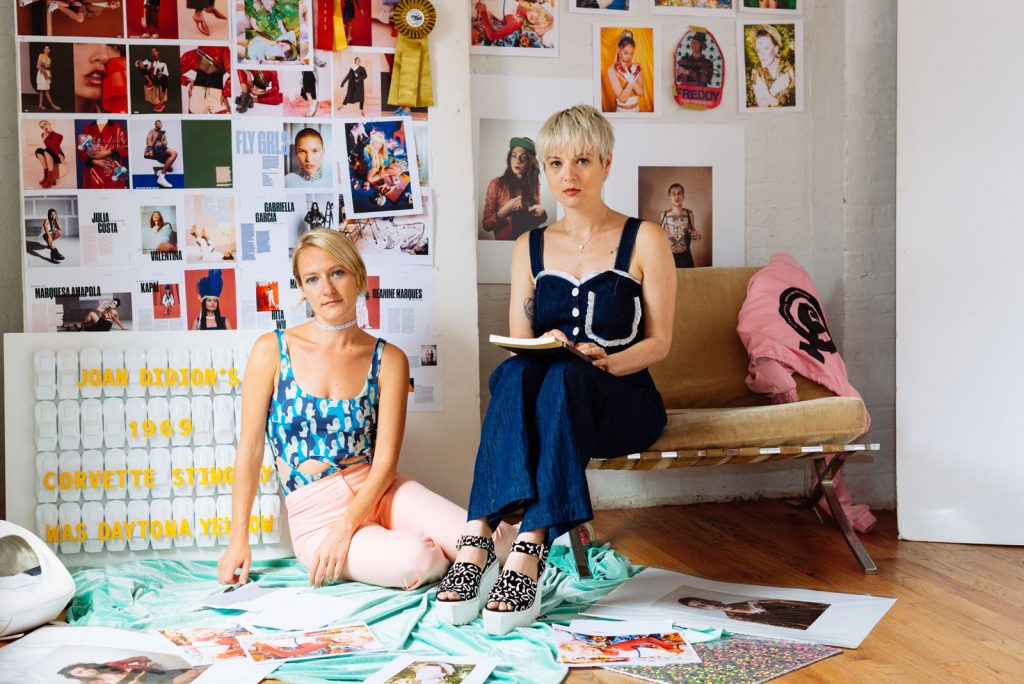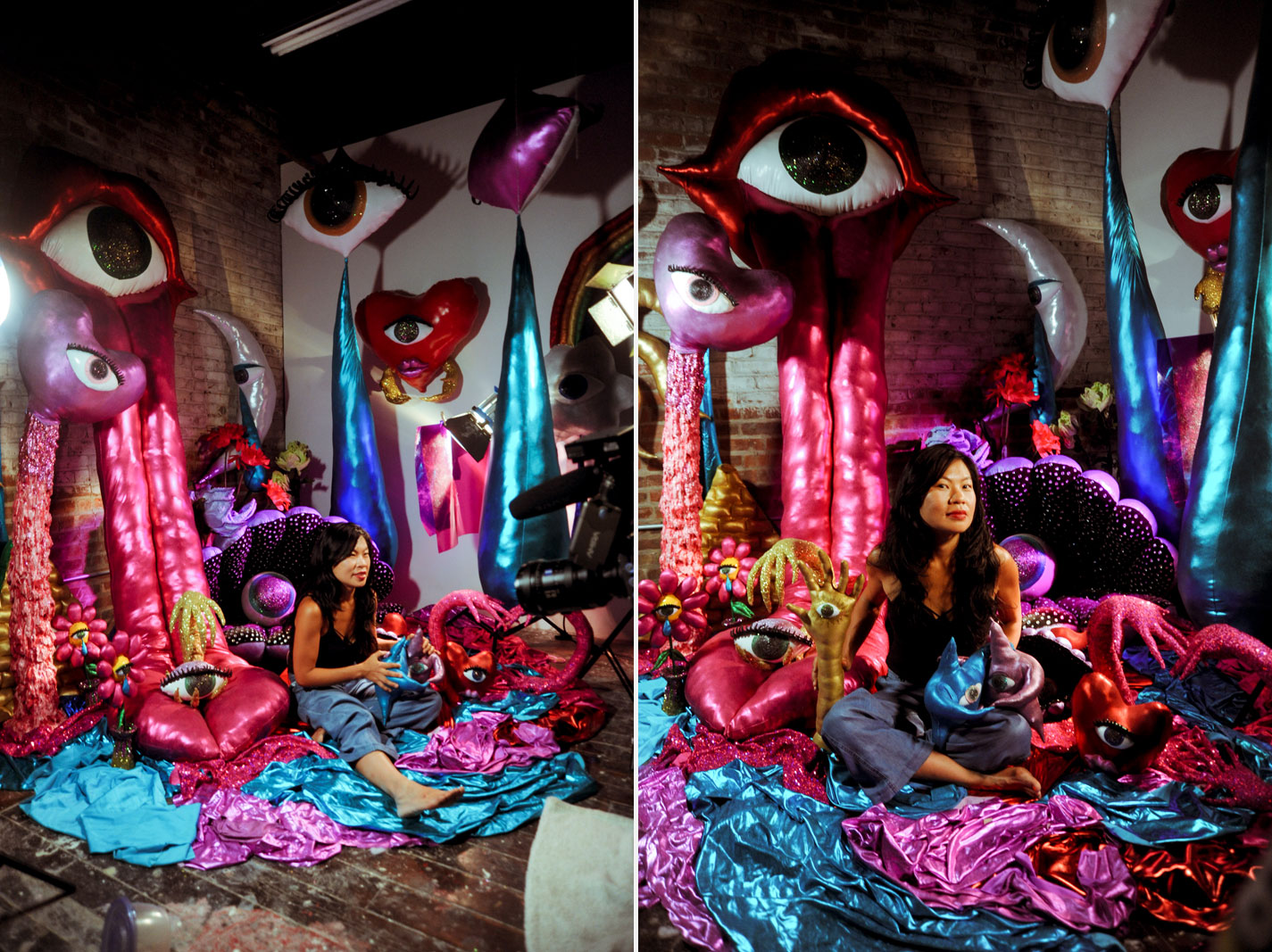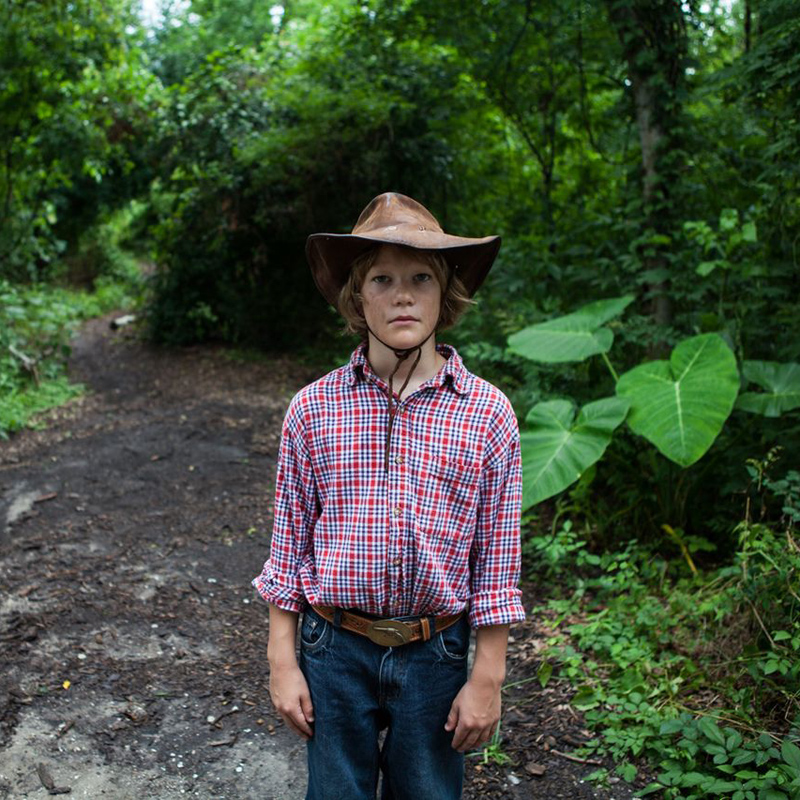Kelsey + Rémy Bennett’s “Under Her Skin” Video Series
Premiering the latest magical mini-documentary, this time featuring artist Hein Koh

Kelsey and Rémy Bennett are New York-based sisters and creative collaborators. They work as a team to curate exhibitions, direct films and even produce branded events. Together, they’re co-producing and directing a web series that profiles female artists from ages 17 to 71, highlighting their extraordinary stories within 6 mini-documentaries. Altogether, it’s called “Under Her Skin,” and it’s made in collaboration with The FRONT, a company led by women with a mission to tell stories “by women, for the world.” Founded by veteran VICE Executive Creative Director, Thalia Mavros, The FRONT is a new media and entertainment organization that brings progressive storytelling from a female perspective to—as the name suggests—the forefront. They too lead brand collaborations, production and events. Today, the latest installment of the “Under Her Skin” series premieres here, featuring artist Hein Koh. Other artists in the series are Panteha Abareshi, Parker Day, Linda Friedman Schmidt, Tafv Sampson and Jane Rule Bourdine. Watch it below and read further for an interview with the Bennett sisters.
For the series, you chose not just artists from different heritage, but across a large age span. Why was that important to the core concept?
Rémy Bennett: We wanted to capture the stories of these women at varying stages of life, and highlight a range of experience. Often women are faced with choices imposed on them, and we wanted to explore how truly infinite the possibilities are. That it comes down to the individual what you want to do both professionally and personally, as opposed to a prescribed expectation for one’s gender. It was clear that all these women were driven by passion, but also the willingness to confront the pain of life, and use it as a positive force.
It’s crucial for young women to see a representation of older women with a strong sense of self who are the masters of their own destinies. We are often given the impression at a young age, that women have an expiration date linked to a physical presentation—which we are taught will no longer serve us after a certain age. I think that this is a fallacy that has been perpetuated for too long.

The brief films are dense with meaning. How did you get to the core of the issues in such a short time frame?
Kelsey Bennett: The process was very collaborative with each woman. We understand the artists we’re working with both on a personal and artistic level, which helps form a connection and builds trust. It makes the collaborative partnership almost psychic in nature.
RB: With each person there was a particular essence from them and their work that we were looking to capture. We really tried to explore ways to get to the heart of things with each individual.

How did you get the idea for the series?
RB: The idea started when Kelsey and I were working with illustrator Panteha Abareshi. She was staying with us in New York for a creative workshopping residency that we sort of designed for her. She was 17 at the time and living in Tucson, Arizona. That’s when we came up with the idea of collaborating on a film about her artistic process, and The Front got on board with it. We had such a positive experience with that project, that we kept on going in the same vein with other artists.
How did you manage to bring it to life? How are you working with financing?
RB: The Front supported us in terms of financing and we travelled around the country gathering small teams of crew who we trusted and could collaborate with. A lot of these women opened up their homes to us and we had a very intimate beautiful working dynamic. We were so grateful to these women for what they were willing to share with us.

Why is this project important right now?
RB: Women’s images are often filtered through the perspective or lens of a man. That can obstruct an honest representation of that individual. Right now we’re seeing how crucial it is for women to have a channel of communication that won’t be fucked with.
KB: These women are all artists who use their personal, chronic, collective, and intergenerational pain, to create. They use their pain as a source of strength and it brings them to a place of knowledge and empowerment. The series really highlights the strength in facing the pain. And setting examples of how to display one’s strength through vulnerability is very important right now. In order to be vulnerable you need to expose the most sensitive parts of yourself which is not always an easy task. One needs to be incredibly strong and brave in order to be vulnerable.
Bennett sister images by Charlie Rubin, all other images courtesy of The FRONT, Kelsey and Rémy Bennett












